Perhaps you’ve come across the word Puccoon before? The popular herb Goldenseal is also known as yellow puccoon.
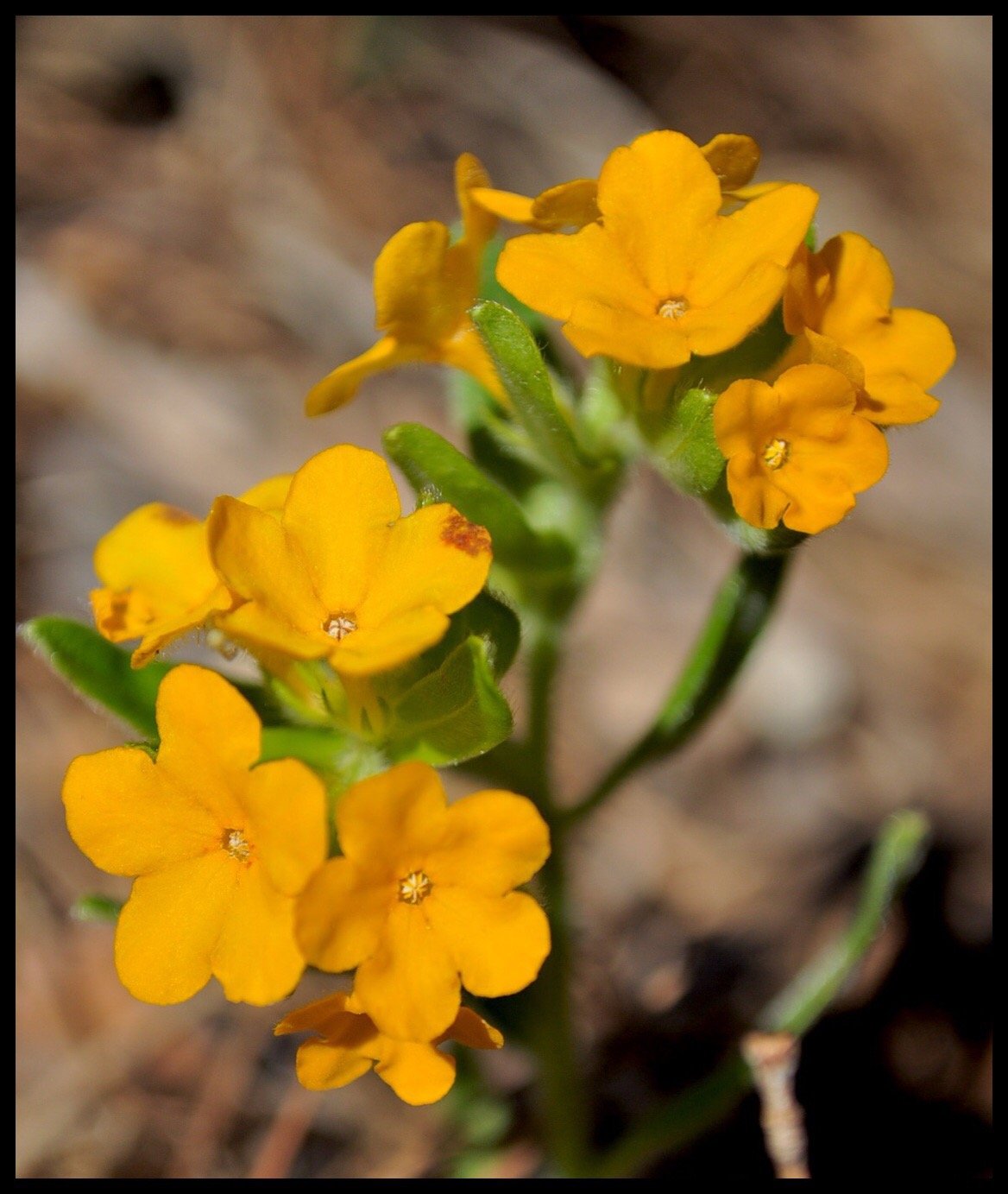
There is poetry in many wildflower names. "Hoary" means gray or white with age, and this plant certainly does have such hairy foliage. "Puccoon" is from the Algonquian word "poughkone" and refers to plants that yield a purple, red, or yellow dye. (1)
The hoary puccoon is so named because the root has a red dye. It is also called Hoary gromwell, orange puccoon and indian paint (2).
I discovered this bright beauty last spring as I was walking on our Western cliff edge. Of course, any colorful flowers catch my eye as I am scanning the ground for mushrooms, arrowheads, tracks, plants, neat rocks and flowers.
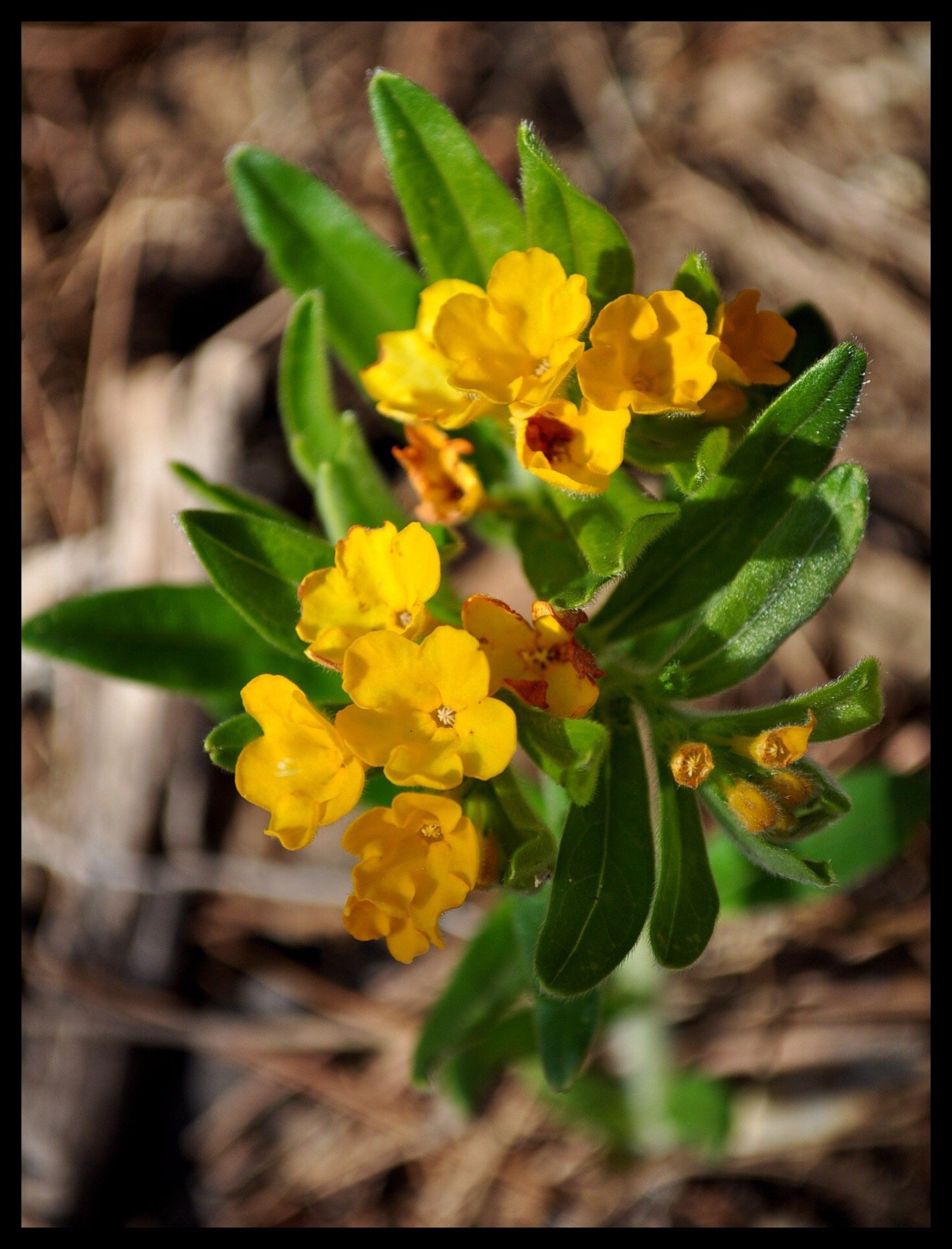
I was immediately drawn to its yellow flower, a rarity in these parts in spring.
Upon closer examination, I noticed the hairy, almost sticky leaves. My Peterson Field Guide easily directed me to the ID of hoary puccoon.
As I was out picking redbud blossoms today, I spied a hoary puccoon and was drawn to it!
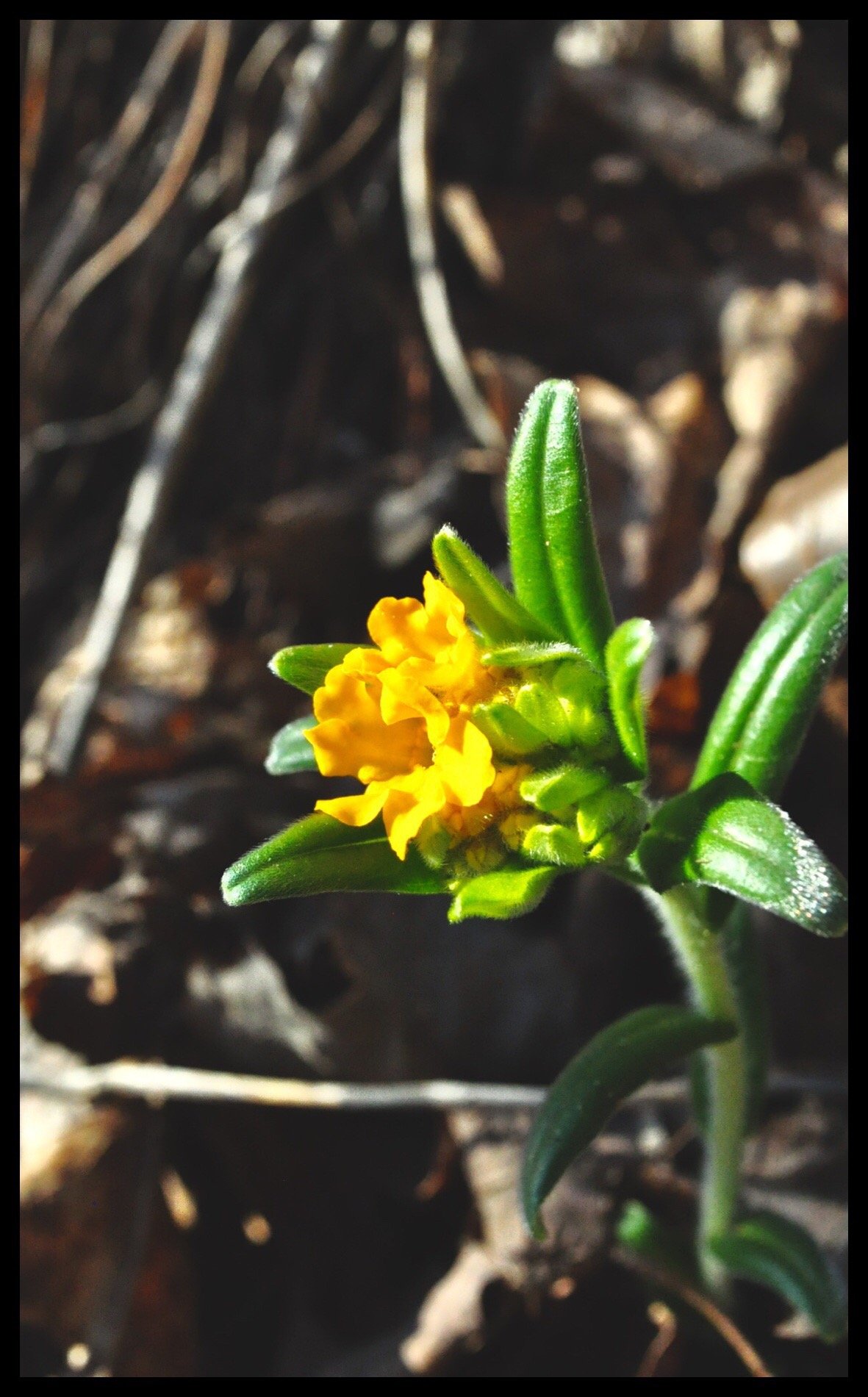
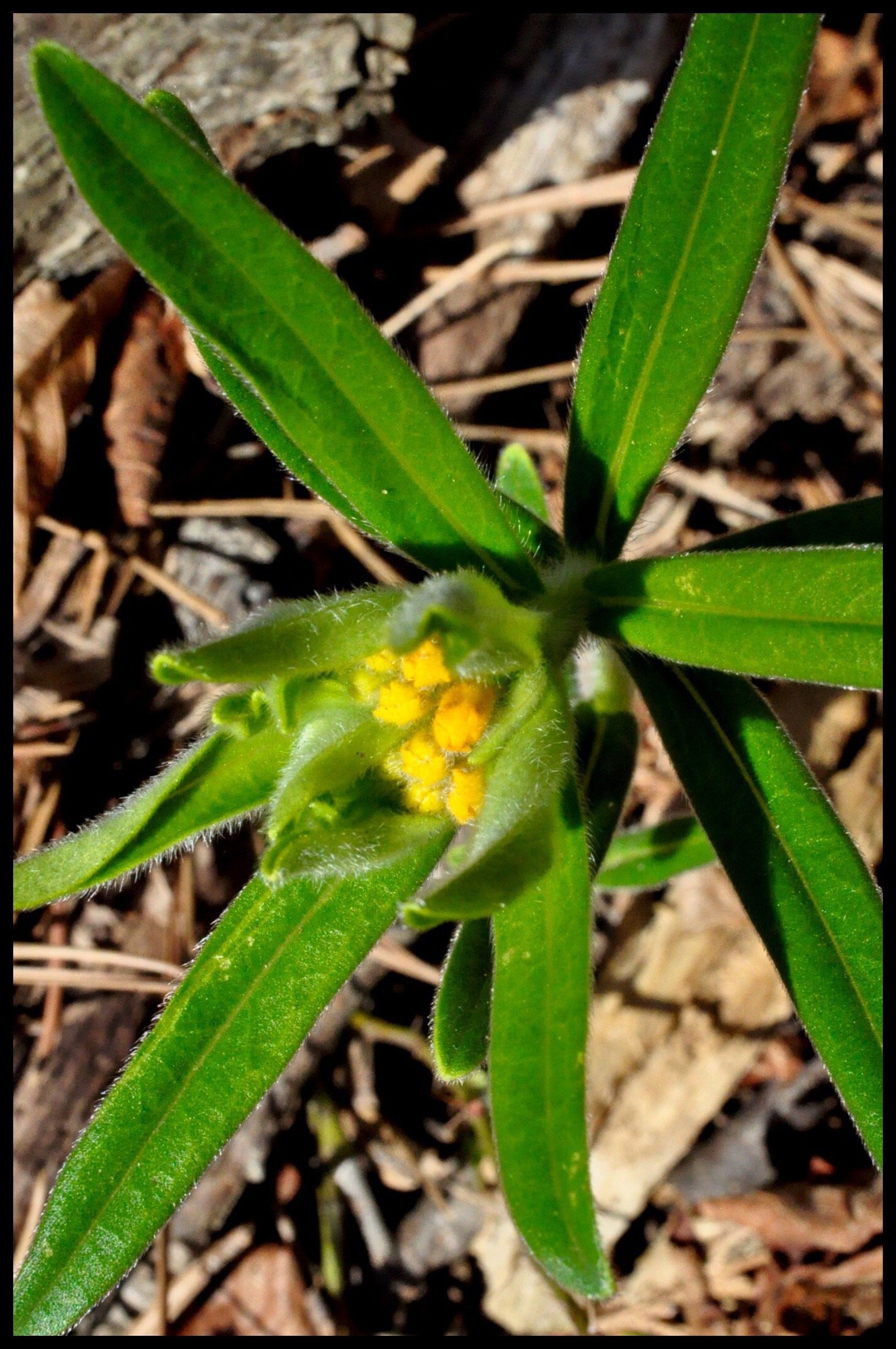
Of course, the naming of things can tell us a lot about the plants themselves, the people who named them and how they used the plants. In the Ozarks, the Native American inhabitants were mostly the Osage. I don’t know much about them as devastatingly, they are no longer in the area (were removed forcibly to Oklahoma).
This is the range of this perennial wildflower which flowers from March-May:
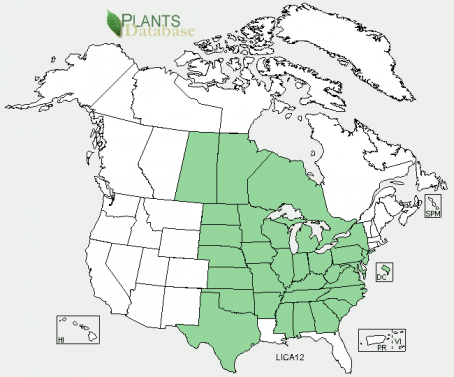
Range Map
We can gather that the root was used for dye. Ponca children used reddish root bark (of the long taproot) as a colorant, chewed with gum (from Silphium laciniatum, common name Compass Plant) to impart a red color. The flowers were used as a yellow colorant. (3)
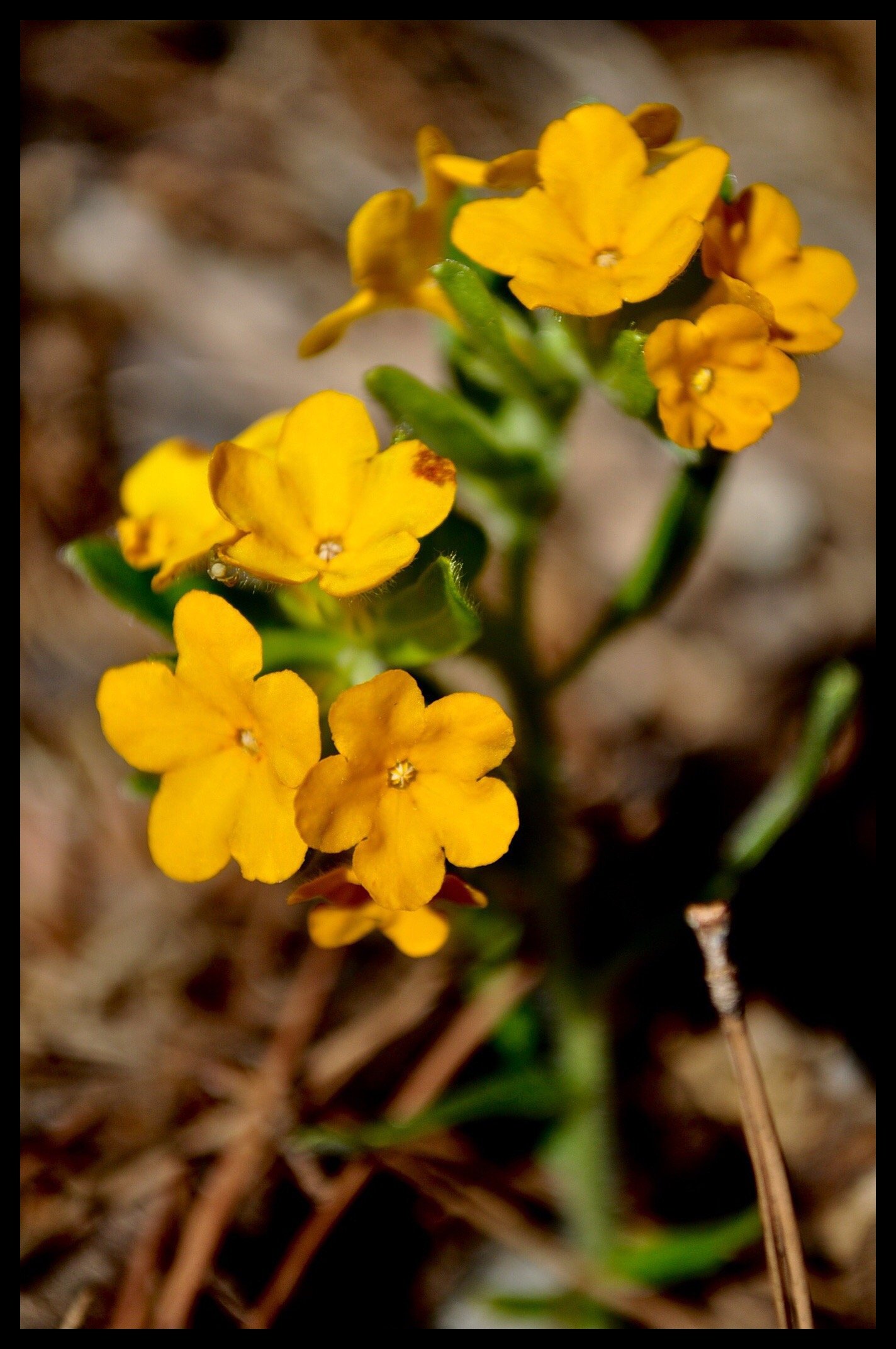
As far as medicinal uses, be careful with this plant as it contains at least 7 pyrrolizidine alkaloids which damage the liver. The only written use is from the Menominee who used the leaf tea as an external wash for fevers accompanied by spasms or on people close to having convulsions. (3)
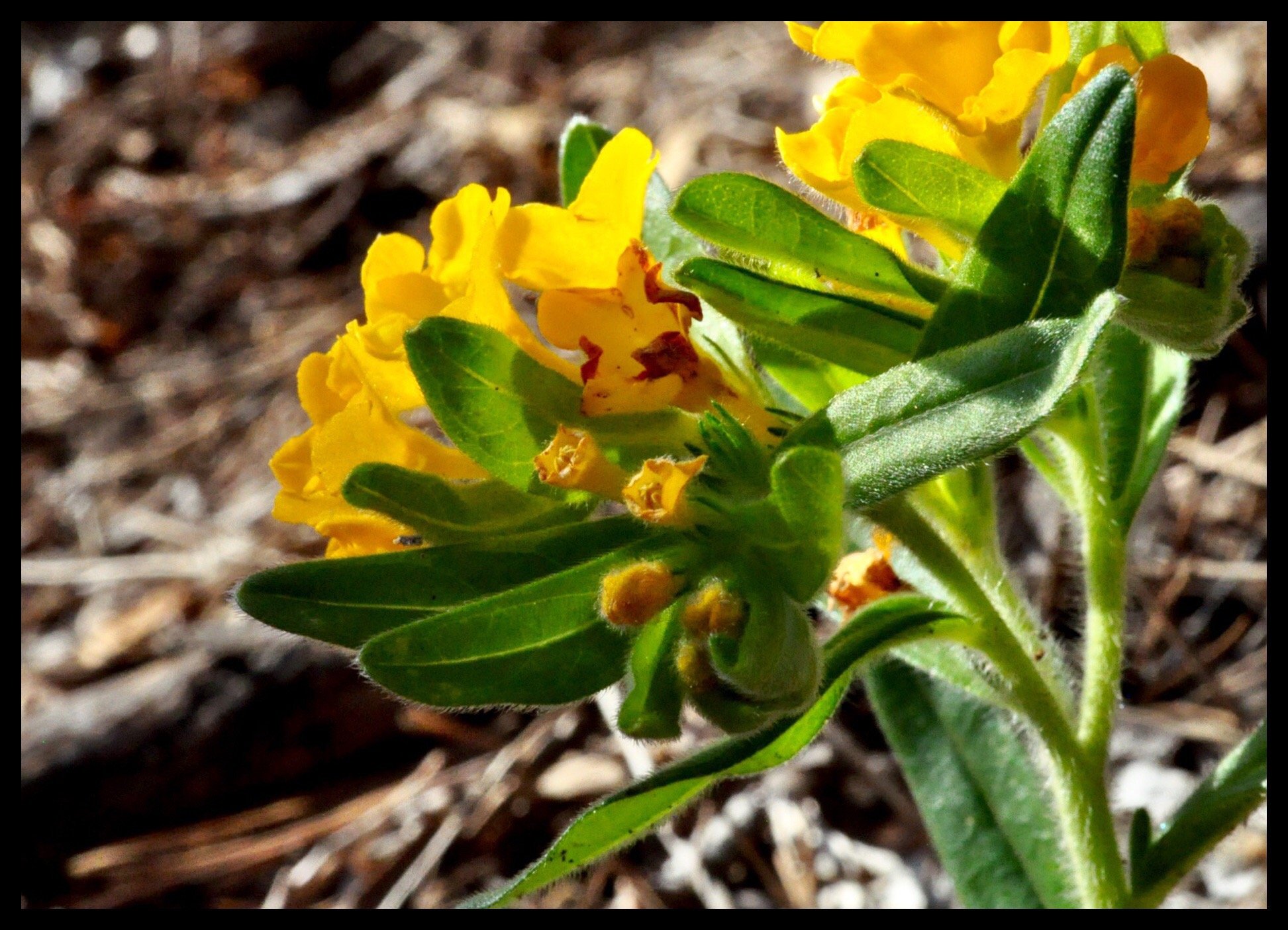
It is in the Borage family (hence the hairy stems) and these alkaloids are common in this family.
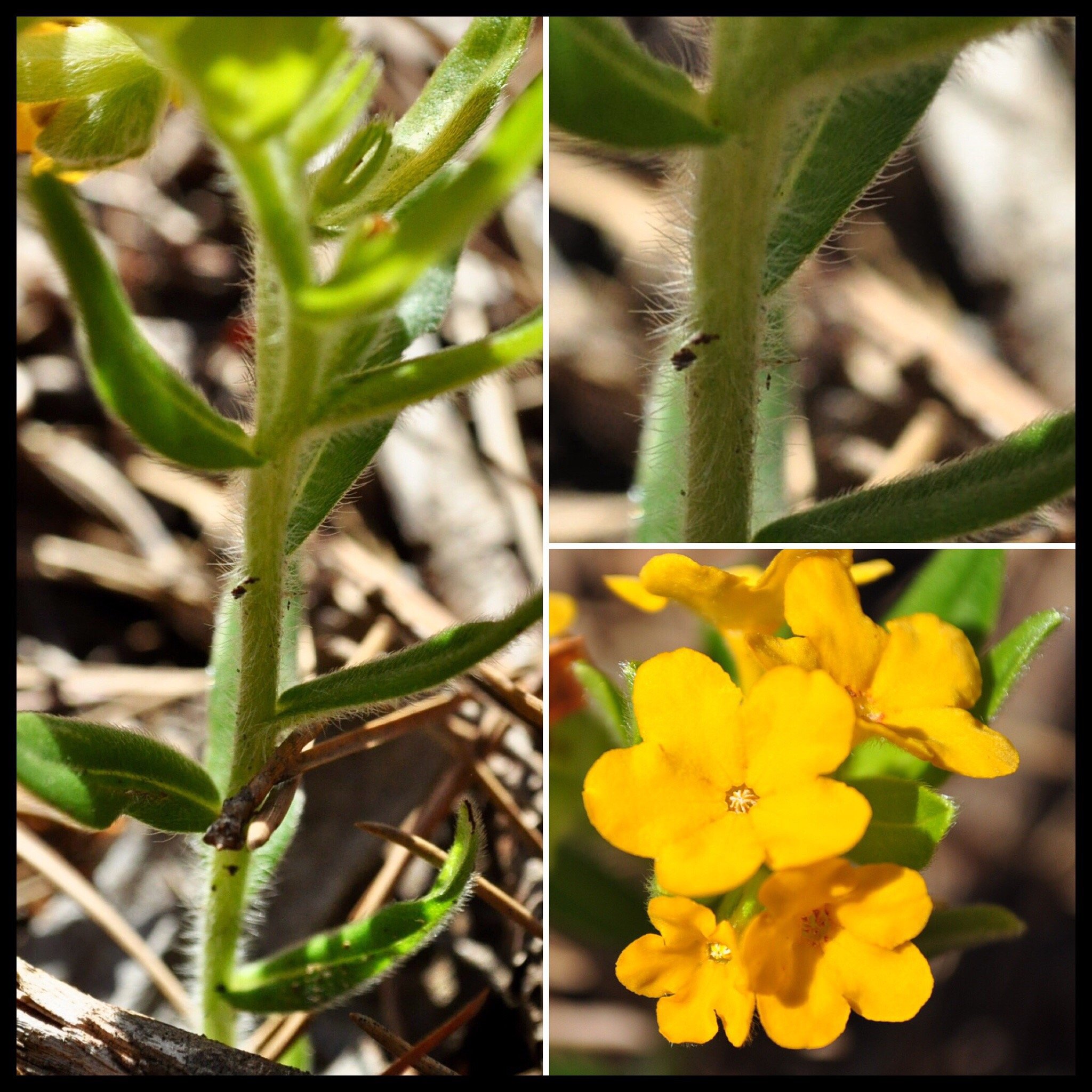
I wouldn’t advise even picking it for the root. It isn’t endangered, but certainly isn’t overtly common. Best left to its showy self and enjoyed! I’ve read it’s difficult to start from seed, but it can be done!
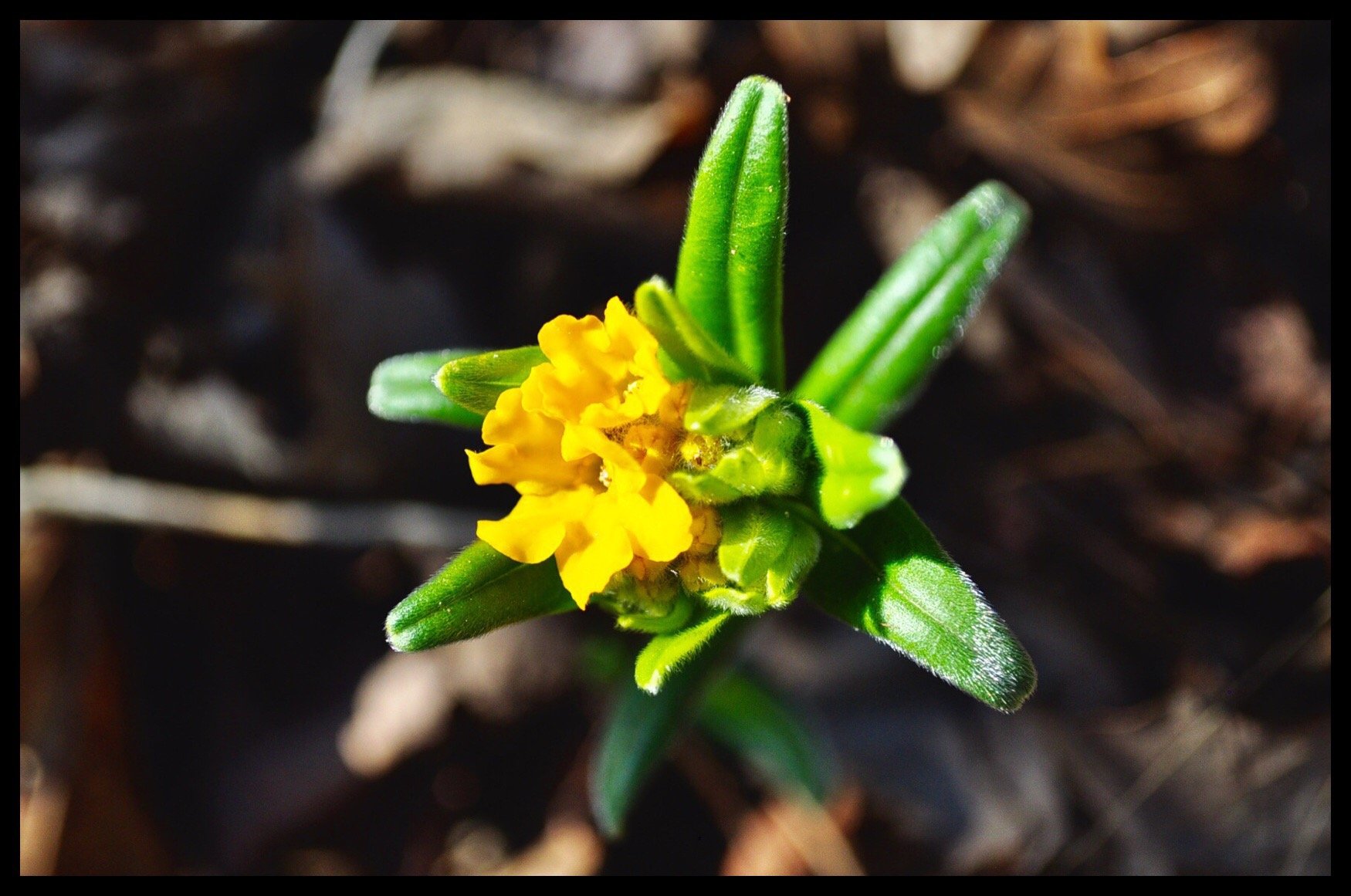
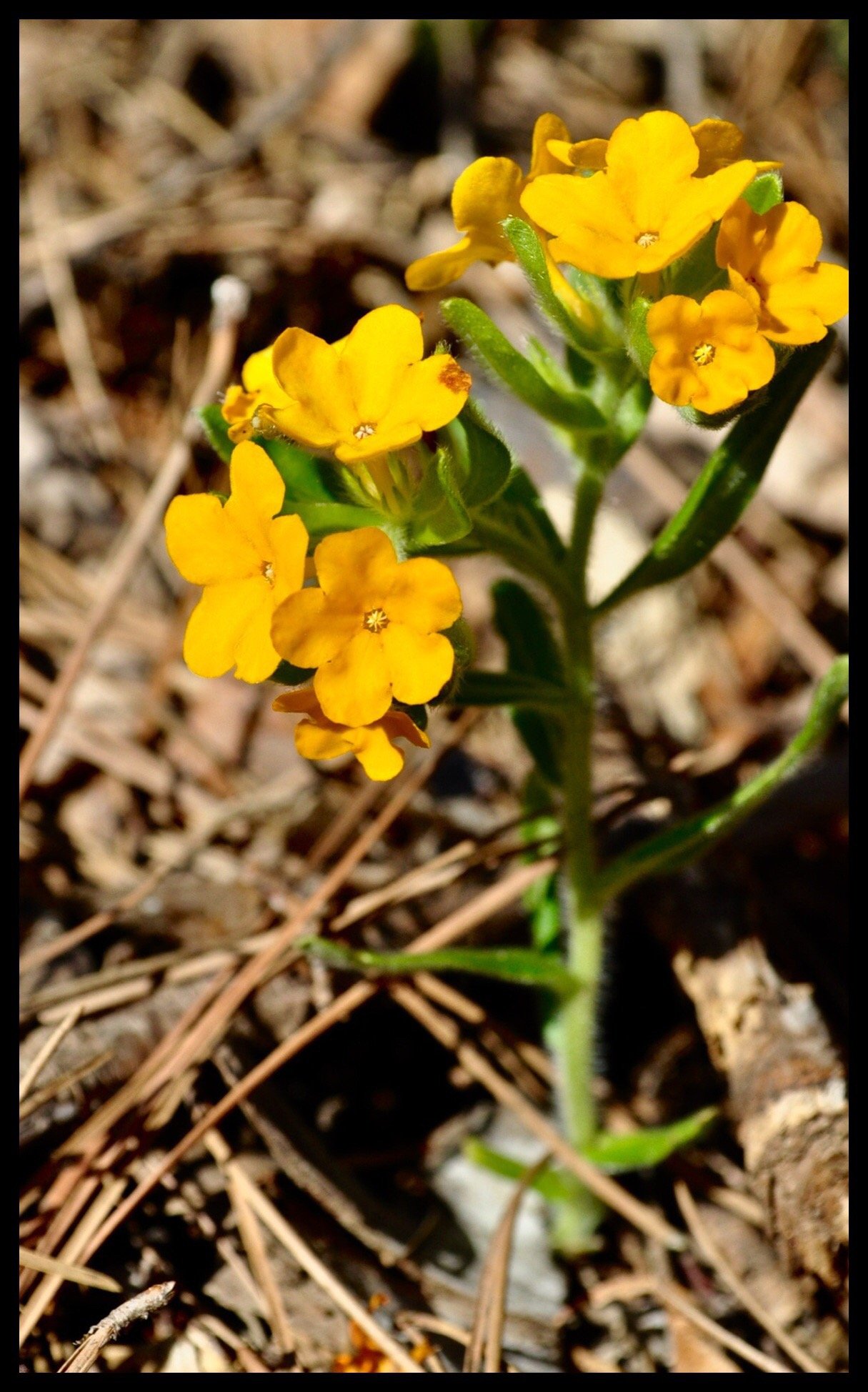
I love spring & all of its interesting growth! Look forward to more plant profiles!
Sources:
(1) https://nature.mdc.mo.gov/discover-nature/field-guide/hoary-puccoon-orange-puccoon
(2)http://www.kswildflower.org/flower_details.php?flowerID=383
(3) Peterson Field Guide to Medicinal Plants and Herbs by Stephen Foster & James A Duke
